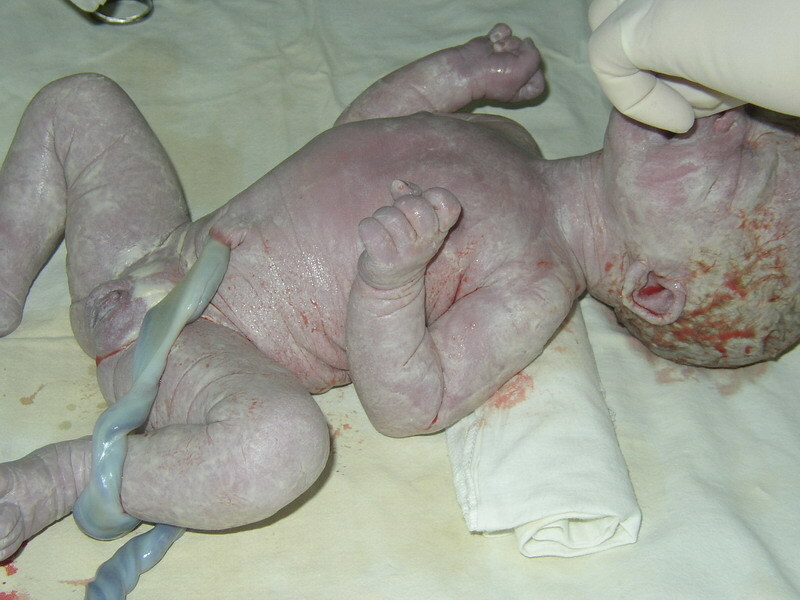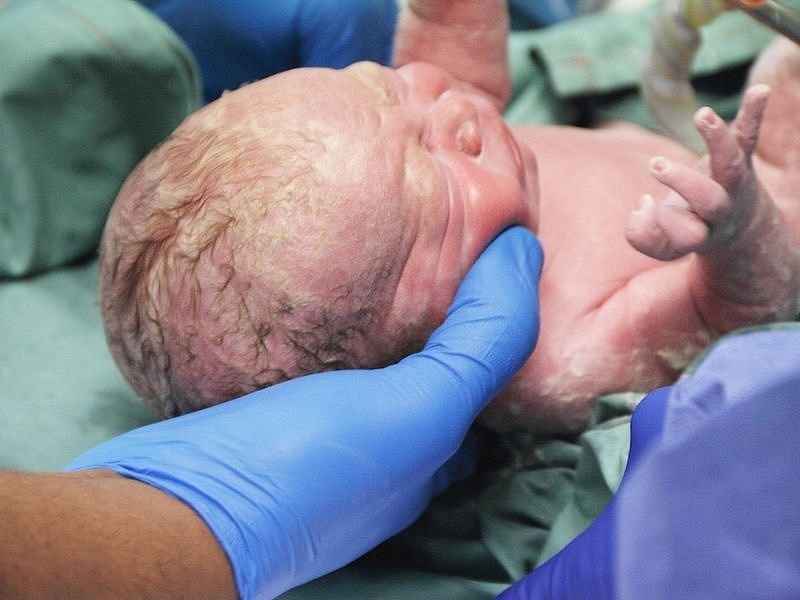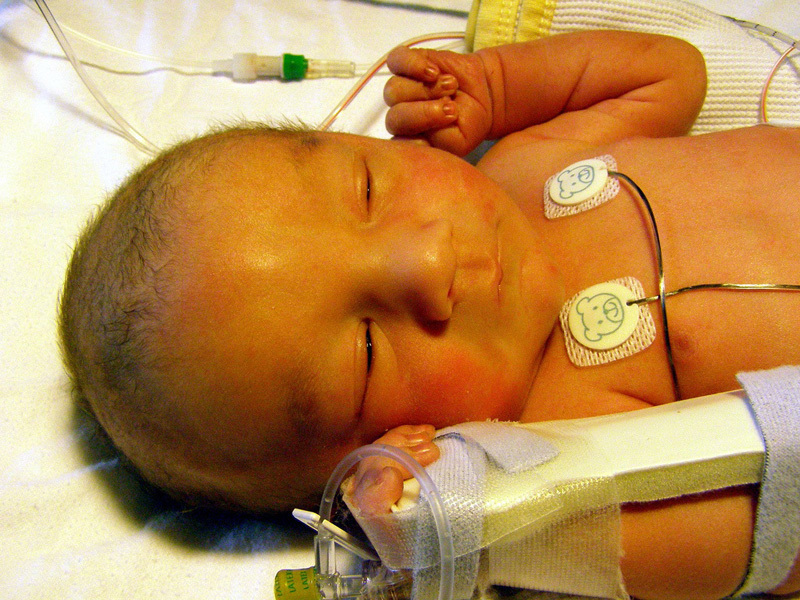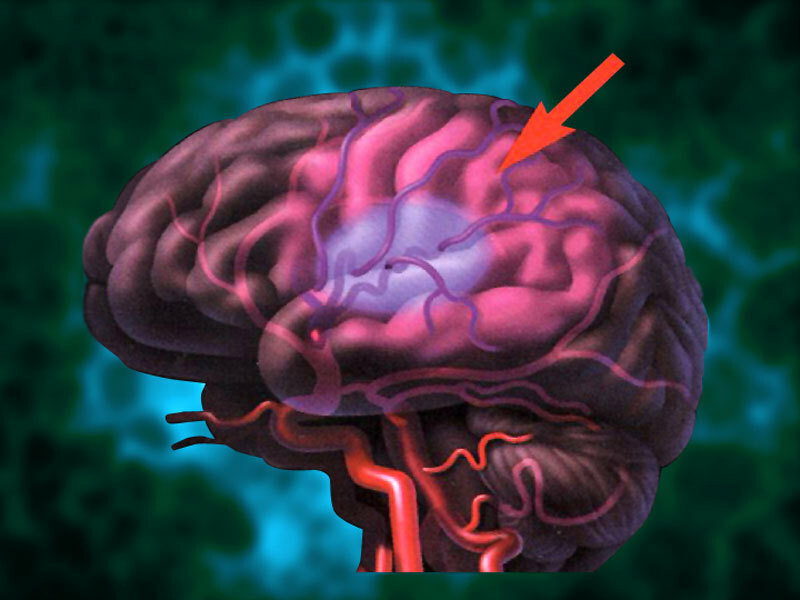Fetal hypoxia is a diagnosis that scares many mothers during pregnancy. How to determine it and whether it is possible to fight with this state - read this article.
Contents of
- What does fetal hypoxia mean?
- Signs of fetal hypoxia in pregnancy
- What causes fetal hypoxia in pregnancy?
- Diagnosis of fetal hypoxia
- Degrees of fetal hypoxia and newborn
- How to avoid fetal hypoxia?
- What are the complications of fetal hypoxia?
- Video: Hypoxia and cord injury with the umbilical cord
- What if I have a fetal hypoxia?
- Treatment of fetal hypoxia in pregnancy
- Fetal hypoxia in pregnancy: reviews of
- Video: Fetal hypoxia
- Fetus in the womb receives all vital nutrients , in particular oxygen, through the placenta from the mother's body
- And although at its early stage of developmentbegin to form lungs, in the third trimester they become ready for independent breathing, yet to breathe, being in the womb, the child can not
- Unfortunately, sometimes it happens that this single sourceto air and life for various reasons, it begins to supply the baby is not enough, resulting in growing fetal hypoxia
What is fetal hypoxia?
Hypoxia of the fetus - oxygen starvation of the baby in the womb, resulting from a lack of oxygen flow through the placenta or because of incomplete digestion of the child's body. This can happen for various reasons and lead to different consequences.
 Under hypoxia, a child loses oxygen in the womb
Under hypoxia, a child loses oxygen in the womb According to statistics, more than 10% of the births of are accompanied by hypoxia of the fetus of varying degrees.
This dangerous condition leads to the fact that changes the metabolism of crumbs .At the initial stage of hypoxia, the child's organism tries to compensate for the lack of oxygen and speeds up the work of all organs and systems, but at the stage of a long, chronic hypoxia, this mechanism ceases to function and the consequences for crumbs can be the most deplorable.
 A woman may not even suspect that a child is exposed to oxygen starvation
A woman may not even suspect that a child is exposed to oxygen starvation Symptoms of fetal hypoxia during pregnancy
In early lines, it is extremely difficult to assume fetal hypoxia. This can be indicated only by the presence of certain diseases in the mother , which a priori threaten to supply the fetus with oxygen. To such diseases carry:
- anemia( low blood in the pregnant woman hemoglobin)
- lung diseases( asthma, bronchitis)
- diabetes
- cardiovascular diseases
- certain kidney diseases
- intoxication
- oncology
- alcoholism and addiction
 Smoking is one of thefactors provoking hypoxia of the fetus
Smoking is one of thefactors provoking hypoxia of the fetus It is possible to assume that, possibly, the baby in the womb undergoes oxygen starvation, it is possible and with ultrasound .If the child's parameters do not match the deadline, namely, they are less than the norm, then this speaks about the lack of nutrients or oxygen .
Also Doppler study with hypoxia will show rapid heart rate or, conversely, slowed down.
Dopplerometry can reveal a violation of blood circulation in the arteries and placenta, which unambiguously leads to hypoxia of the fetus.
 Ultrasound with doppler
Ultrasound with doppler In the second half of pregnancy, when a child in the womb of the pleases his mother with the movements of , the pregnant woman can also determine hypoxia.
If a toddler behaves too actively or his movements occur less often than usual, then the woman should turn to the gynecologist, because changes the rhythm of movements of crumbs - this is one of the most obvious signs of hypoxia.
What causes fetal hypoxia in pregnancy?
As already mentioned above, the inadequate supply of oxygen from the mother to the baby may be due to various diseases of the woman.
But this is not the only factor that causes hypoxia. Scientifically established that smoking a woman , which carries a child, can provoke a lack of placental nutrition, and, hence, the child in this case will receive less oxygen.
 Smoking during pregnancy is the way to a child's disability
Smoking during pregnancy is the way to a child's disability Negative on the condition of the woman and the child, also has a rare outdoor exposure to .If a woman is in a stuffy place for a long time, this can also lead to fetal hypoxia.
 a pregnant woman should spend as much time outdoors as possible
a pregnant woman should spend as much time outdoors as possible But not only changes in the mother's body can trigger a change in the amount of oxygen that enters the baby. also causes the following causes of fetal hypoxia
- associated with changes in the child's body and the characteristics of the course of pregnancy:
- plaquent follicle
- gestosis
- congenital malformations of the fetus
- pregnancy retention
- infection
- anemia in the child
- cord obtuscle
 Hypoxia of the child in childbirth
Hypoxia of the child in childbirth Acute hypoxia may occur during the birth of if the labor activity at the parturient child is weak and the child will be in the birth canal for a long time.
Diagnosis of fetal hypoxia
- One of the methods for diagnosing the development of hypoxia is listening to the heartbeat of a child with the help of the
- stethoscope. This is done both during a routine visit to the gynecologist and during labor and labor when there is a large risk of asphyxiation baby
- But this methodis rather inaccurate, since counting the number of heart beats may be incorrect, which can lead to erroneous evaluation of the child's condition
 Listening to the heartbeat with the
Listening to the heartbeat with the - stethoscope BolleThe method is CTG( cardiotocography)
- The method consists in listening to the fetal heartbeat with the help of sensors, while the result is immediately fixed by the device on the
- paper. When the is studied, the doctor makes a conclusion about the state of the baby in the womb
 Ultrasound during pregnancy
Ultrasound during pregnancy For chronic hypoxia, the size of the toddler will be not to match the gestational age of , which can be easily established using US .
Hypoxia caused by inadequate placental nutrition can easily be determined with the Doppler Meter , which will show the vascular status and maturity of the placenta.
There are also various biochemical methods of for diagnosing fetal hypoxia, in which the mother's blood tests are performed by the .
Degrees of fetal hypoxia and newborn
Modern medicine distinguishes from three types of fetal hypoxia:
- Intrauterine when the baby suffers from a lack of oxygen while in the womb of the
2. Intranatal is hypoxia that develops during labor during passagechild by birth.
3. Newborn or newborn asphyxia - oxygen deficiency in a child who has already been born
 Hypoxia may develop after the birth of a baby
Hypoxia may develop after the birth of a baby According to the duration of the period, during which the child suffers without oxygen or with a small amount of admission, is distinguished by chronic hypoxia, which can last several days, weeks and months and acute , which lasts for several minutes and hours.
Because of its severity, hypoxia may be mild or severe. Evaluation of this indicator is carried out after delivery with the help of a special Apgar scale. It identifies five main indicators and estimates from 0 to 2 points of .
Immediately after birth, an overall assessment of the condition of the newborn is made, after five minutes, a re-evaluation is performed. If the score is 8-10 , the child is healthy and hypoxia did not occur during childbirth.
 Apgar scale
Apgar scale If on the Apgar scale the child is given from 4 to 7 , then this indicates moderate hypoxia, and 0-3 is diagnosed with severe hypoxia and asphyxia.
How to avoid fetal hypoxia?
There are factors independent of a woman and hypoxia can develop not through her fault. Nevertheless, a woman waiting for a child should do everything to ensure that the baby at her heart was comfortable, he grew and grew.
 Smoking during pregnancy is unacceptable - you do not have any right to maim the health of the baby in the womb!
Smoking during pregnancy is unacceptable - you do not have any right to maim the health of the baby in the womb! Help experts in this:
- when registering do not hide from the doctor illnesses that you have
- abandon bad habits
- more often outdoors , more walk on foot
- try to make your power maximally useful and varied, especially for iron-containing foods, such as apples, liver, beef, buckwheat, greens, spinach, sea fish, legumes.
- regularly visit the gynecologist's advice, lead the pregnancy, in time make the delivery of the necessary tests and studies
- more rest, avoid stress situations
 Products with a high iron content
Products with a high iron content Carefully monitor your condition and the state of the baby. If his locomotor activity seems strange to you or you experience dizziness, the stomach often becomes firm, then you should immediately consult a doctor, because it is at these moments that the baby may suffer from a lack of oxygen.
What are the complications of fetal hypoxia?
Unfortunately, the hypoxia has the severe consequences of , which sometimes leave their imprint on the child's entire later life, and sometimes lead the to death.
Oxygen starvation at the cellular level is fraught with a lack of energy in the cells and their further necrosis.
 Consequences of hypoxia can be fatal
Consequences of hypoxia can be fatal The greatest sufferer is the lack of oxygen brain .Even insignificant hypoxia can lead to the fact that some cells of the brain will die, which will necessarily affect the health of the child.
But this is not the only organ that suffers from lack of oxygen. Depending on the severity of the hypoxia and the duration of this dangerous condition, is given its following effects in newborns:
- disrupting the functioning of individual organs and their systems, in particular the CNS
- high intracranial pressure
- formation of thrombi, tissue hemorrhage
- bradycardia or arrhythmia( rapid or delayed heartbeat)
- decreased muscle tone
- convulsions
 Muscle Tone
Muscle Tone decreased in hypoxia-exposed children. One of the most severe consequences of hypoxia is cerebral palsy( cerebral palsy) , which leads to childhood disability, mental retardation, low probability of adaptation in society. Among the serious diseases of that are provoked by hypoxia release:
- perinatal encephalopathy
- cerebral edema
- hydrocephalus
- epilepsy
- heart, kidney, liver
- cerebral hemorrhage
 The brain suffers most from hypoxia
The brain suffers most from hypoxia The most serious consequence of hypoxia is the lethal outcome that occurs due to asphyxiation.
Video: Hypoxia and congestion with the umbilical cord
What if I have a fetal hypoxia?
If you suspect a child in the womb is lacking oxygen, should immediately consult a doctor .
He will listen to the heartbeat of the fetus and, if necessary, will send for further research and testing.
 Hypoxia is not a verdict, it is necessary to fight for the baby's health
Hypoxia is not a verdict, it is necessary to fight for the baby's health Confirmation of diagnosis - is not a reason for panic .It is necessary to gain endurance and follow all the doctor's instructions in order to help your kid as quickly as possible and save him from serious consequences.
Treatment of fetal hypoxia in pregnancy
Since hypoxia is only a consequence of a disease, needs to cure the underlying ailment in order to eliminate it.
Each organism is individual and there is no general scheme for treating the causes of hypoxia, but due to certain activities, aimed at stabilizing the state of of the mother and child, hypoxia can be eliminated.
 The doctor will prescribe a comprehensive treatment for
The doctor will prescribe a comprehensive treatment for . In case of hypoxia,
- is performed by improving the placental blood supply with medications
- for reducing the tone of the uterus( for this purpose, usually prescribed no-sppa, papaverine, drotaverin, magne-B6)
- reception of vitamin complexes
- change in daily regimen(increase in time spent outdoors, change in diet, restful rest)
In the case of chronic hypoxia, a woman is hospitalized in a hospital , where she is under the supervision of doctors. If the cause of hypoxia fails and the woman's condition does not improve, she can be shown delivery by cesarean section of , which is performed by no earlier than the 28th week of pregnancy.
Fetal hypoxia in pregnancy: reviews of
Most women who have experienced fetal hypoxia, say that this dangerous condition of was detected when testing and during ultrasound .
As not all women know about the norms of fetal movement, it is very difficult for many to establish hypoxia on the activity of the baby for many.
 Observe the motor activity of the crumbs
Observe the motor activity of the crumbs - If there is a suspicion of hypoxia or if your health worsens needs to contact a gynecologist
- It's better to be a compassionate mother who worries about anything than to write off her suspicions about the deceptive sensations of
- So you may miss the development of the condition,at which every instant for a baby in the womb turns into suffering from lack of oxygen
Video: Fetal hypoxia
